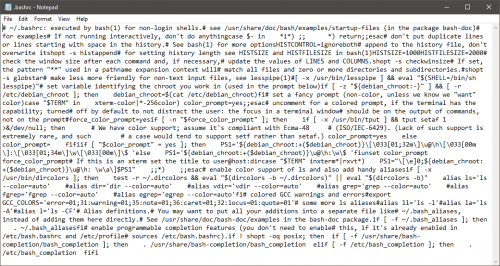This Hacker News thread is full of useful and cool command line applications. Check them out, if you want to challenge or change your fingertip memory.
Category: Sysadmin
System administration is a special are of IT. It also has a special place in my heart. It is an interesting mixture of all the other disciplines, both common across the whole industry, and at the same time unique for each person, company, and geographical location. When I have something to say or share about system administration, I use this category.
Creating a 1.3 Million vCPU Grid on AWS using EC2 Spot Instances and TIBCO GridServer
This Amazon AWS blog post provides a great insight into the benefits of the cloud computing in general and Amazon AWS in particular. The whole thing is well worth the read, but here are a few of my favorite bits.
The scale:
The grid grew to 61,299 Spot Instances (1.3 million vCPUs drawn from 34 instance types spanning 3 generations of EC2 hardware) as planned, with just 1,937 instances reclaimed and automatically replaced during the run, and cost $30,000 per hour to run, at an average hourly cost of $0.078 per vCPU. If the same instances had been used in On-Demand form, the hourly cost to run the grid would have been approximately $93,000.
The size of the Amazon AWS customers:
1.3 million vCPUs (5x the size of the largest on-premises grid)
The evolution of computing power over the last few years:
To give you a sense of the compute power, we computed that this grid would have taken the #1 position on the TOP 500 supercomputer list in November 2007 by a considerable margin, and the #2 position in June 2008. Today, it would occupy position #360 on the list.
Now, just for fun, exercise the idea of building something like this in house…
Windows Notepad Finally Supports Unix, Mac OS Line Endings
This Slashdot story links to this blog post by Microsoft. 33 years later, one of the most annoying issues with the Notepad text editor is resolved:
Starting with the current Windows 10 Insider build, Notepad will support Unix/Linux line endings (LF), Macintosh line endings (CR), and Windows Line endings (CRLF) as usual. New files created within Notepad will use Windows line ending (CRLF) by default, but it will now be possible to view, edit, and print existing files, correctly maintaining the file’s current line ending format.
They shouldn’t have invented their own line ending in the first place. But it’s great to see that they finally acknowledge the existence of the rest of the world.
Vim, cfdo, Ale and RipGrep
This blog post goes over several grep-like tools and their integration with Vim. If that’s something you do often, it’s worth a read. The tools are:
- Vim’s built-in “:cdo” and “:cfdo” commands. Here’s another blog post with a nice explanation of what these are and how to use them.
- Ale – asynchronous lint engine.
- RipGrep – a very fast tool for recursively searching directories for a regular expression. Extra bits for Vim integration are provided by the vim-ripgrep plugin.
The Nightmare Letter: A Subject Access Request under GDPR
“The Nightmare Letter: A Subject Access Request under GDPR” article features an example worst-case scenario (or so) of a Subject Access Request (SAR) under the General Data Protection Regulation (GDPR).
On one hand, the example letter is quite extreme. On the other – it’s quite realistic, especially given the (almost) template.
So, who’s ready for this? And who’s laughing now?
Found via the comments to this Slashdot thread, which is also worth a read.
